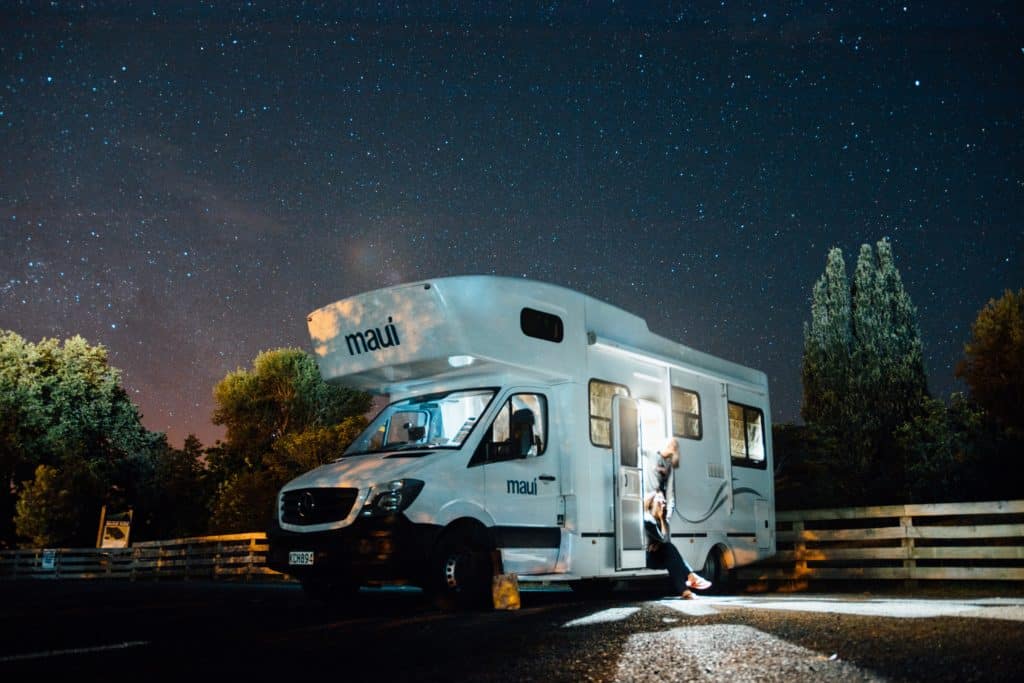Written by: Jason Mueller
There are many reasons to consider transporting an RV. Some people buy RVs from sellers a couple of states away. Others may want to make the most of their vacation without wasting unnecessary time on the road. For example, exploring Texas in an RV can be amazing. But making the trip on the road from Maine can shorten a family camping vacation time greatly.
Sometimes it’s best to ship an RV to a specific destination where the owners can pick it up and use it. And like other vehicles, RVs are generally easy to transport. However, that doesn’t mean owners shouldn’t put a bit of thought into managing the process.

Disclaimer: As a professional blogger, I sometimes receive discounts or a small commission for reviewing businesses. These small commissions allow me the ability to continue creating content. All purchases made will come at no extra cost to you. Thank you so much for supporting my blog!
Preparing an RV for Transport
Safe and efficient RV shipping requires following a few golden rules. The following tips can help any RV owner to ship their vehicle across the country when driving or towing isn’t an option. Even if using a specialist like A1 Autotransport, RV owners must still do some prep work.
Tip No. 1 – Prepare Personal Belongings
Shipping vehicles with personal belongings inside isn’t always advised. But when it comes to RVs, many transport companies may accommodate RV owners.
That said, it’s essential to ensure the belongings are safe. Anything that can be damaged during a rough ride should be stored away and not left in plain sight. If possible, valuables should be removed before handing the RV over to the shipper.
Tip No. 2 – Prepare Appliances for Shipping
Some RVs have complex electrical systems and many appliances. But you don’t need to have a high-tech RV to encounter electrical issues along the way. The same goes for gas stoves, boilers, and similar utility appliances.
The best course of action is to disconnect and shut off all non-essential electrical and gas appliances when shipping an RV, especially over long distances. It eliminates the risk of running into connective issues, power surges, and other problems that the shipper can’t identify if they’re not actually riding inside the RV while in transit.
Tip No. 3 – Secure Non-Fixed Items
Any well-equipped RV will have at least a few cabinets, windows, and various other accessories and items that move. Cabinet doors, drawers, and windows can repeatedly swing open during transport. Locking or even removing them before shipping the RV is essential to minimizing interior damage to the RV.
Tip No. 4 – RV Technical Checkups Before Transporting and RV
No matter how an RV is shipped, it must still undergo a technical inspection. For example, the signal lights and fluids should be at optimum levels. The tires, tow bar, and hitch shouldn’t show signs of damage. Naturally, these checkups depend on the shipping method. But it’s generally easier and cheaper to ship an RV in pristine working order than a broken or non-operational RV.
Tip No. 5 – Pick a Reputable Company for Transporting an RV
Not every company has the chops and experience to ship an RV quickly, safely, and at an affordable price. Likewise, not all shipping companies have the necessary equipment to load, transport, and unload an RV. Finding a company with all the permits, licenses, experience, and insurance coverage is crucial to minimizing risks.
Tip No. 6 – Communication and Coordination
Not all RVs are built the same. And with the amount of customizing people do these days, each RV can be somewhat unique.
Coordinating with the transportation company is essential. Shippers must know what special transportation requirements to expect. Clear communication can prepare drivers for the unexpected and clarify to shipping companies what equipment they need to use to transport the RV.
Shipping Services to Consider
Unlike shipping other vehicles or heavy machinery, transporting an RV is pretty much straightforward. Owners have three options to choose from based on their expectations, requirements, distance, budget, and other factors: hire a driver, ship on a flatbed, or tow.
RV owners can hire another driver to take their RV from point A to B in the U.S. This is often the cheapest way to ship an RV. But it’s worth considering because driving the RV, of course, adds to its mileage. And if you’re not working with an experienced shipping company, it’s harder to vet the driver’s experience, prior jobs, etc.
Another way to transport RVs is by using a flatbed shipping service. Flatbed trucks or trailers can move one or more RVs across long distances. This costs more than a drive-away service but is the best option when shipping non-operational RVs.
Lastly, owners can hire shipping companies to tow their RVs to the destination. Since experienced companies have fleets of vehicles, it shouldn’t be hard to find the ideal car or truck for the job.
Although not usually necessary, RV owners can also opt for railway freight shipping services. They are more expensive but may be faster in some situations. Yet the higher costs and more complex pickup and delivery logistics aren’t attractive for the average RV owner.
Cost Breakdown for Transporting an RV
All shipping companies can exercise whatever rates they want based on their service package, driver experience, equipment, etc. A lot goes into determining the final quote, including but not limited to the following.
- Distance
- Size
- Pickup and delivery locations
- Weather and season
- Availability
- Method of transport
Some companies can charge between $2.00 and $2.50 per mile for transporting an RV in the U.S. Naturally, long distance shipping costs more, despite the average cost per mile being cheaper. Likewise, owners can expect to pay a premium if they require urgent shipping.
Learn Safe RV Shipping for a Great Vacation
Vacationing in an RV is a great way to reconnect as a family and eliminate the need to just stick to urban attractions. The U.S. has some fantastic camping destinations and off-the-beaten-path natural wonders to visit. Jumping in an RV and taking a trip out of state and outside the usual comfort zone can offer a nice change of pace and a relaxing experience.
But traveling long distances in an RV isn’t always great if the owners have a very remote destination in mind. Fortunately, shipping an RV and having it ready for pickup is common practice. It can help save time and mileage when done correctly and with the help of professional shippers.

